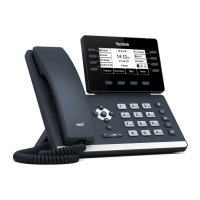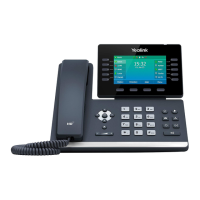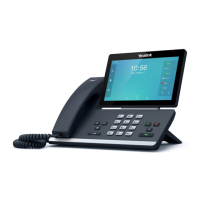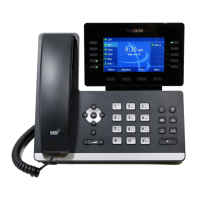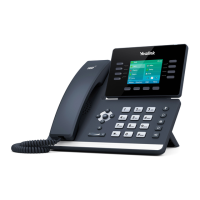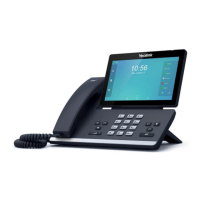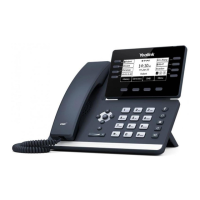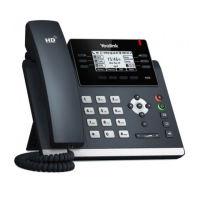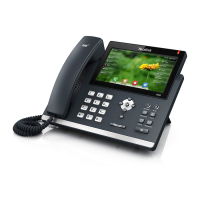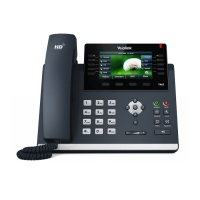Administrator’s Guide for SIP-T2 Series/T19(P) E2/T4 Series/T5 Series/CP860/CP920 IP Phones
938
5. Press the Save soft key to accept the change.
To configure a phone lock key via phone user interface:
1. Press Menu->Features->DSS Keys.
2. Select the desired DSS key.
3. Press or , or the Switch soft key to select Key Event from the Type field.
4. Press or , or the Switch soft key to select Phone Lock from the Key Type field.
5. (Optional.) Enter the string that will appear on the LCD screen in the Label field.
6. Press the Save soft key to accept the change.
Transport Layer Security (TLS)
TLS is a commonly-used protocol for providing communications privacy and managing the
security of message transmission, allowing IP phones to communicate with other remote
parties and connect to the HTTPS URL for provisioning in a way that is designed to prevent
eavesdropping and tampering.
TLS protocol is composed of two layers: TLS Record Protocol and TLS Handshake Protocol. The
TLS Record Protocol completes the actual data transmission and ensures the integrity and
privacy of the data. The TLS Handshake Protocol allows the server and client to authenticate
each other and negotiate an encryption algorithm and cryptographic keys before data is
exchanged.
The TLS protocol uses asymmetric encryption for authentication of key exchange, symmetric
encryption for confidentiality, and message authentication codes for integrity.
Symmetric encryption: For symmetric encryption, the encryption key and the
corresponding decryption key can be told by each other. In most cases, the encryption
key is the same as the decryption key.
Asymmetric encryption: For asymmetric encryption, each user has a pair of
cryptographic keys – a public encryption key and a private decryption key. The
information encrypted by the public key can only be decrypted by the corresponding
private key and vice versa. Usually, the receiver keeps its private key. The public key is
known by the sender, so the sender sends the information encrypted by the known public
key, and then the receiver uses the private key to decrypt it.
IP phones support TLS version 1.0, 1.1 and 1.2. A cipher suite is a named combination of
authentication, encryption, and message authentication code (MAC) algorithms used to
negotiate the security settings for a network connection using the TLS/SSL network protocol. IP
phones support the following cipher suites:
DHE-RSA-AES256-SHA
DHE-DSS-AES256-SHA
AES256-SHA
EDH-RSA-DES-CBC3-SHA
EDH-DSS-DES-CBC3-SHA
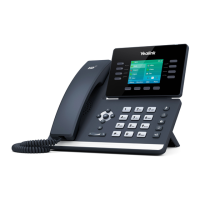
